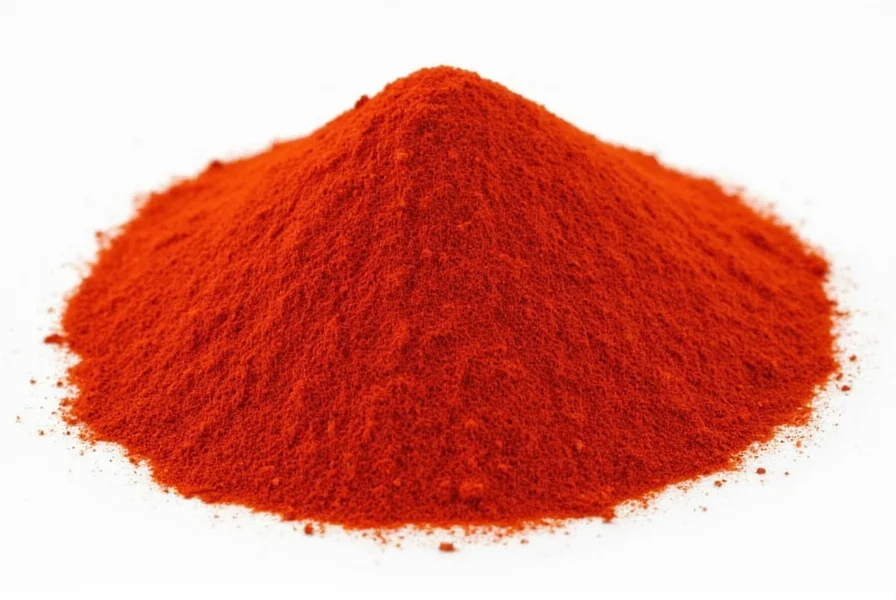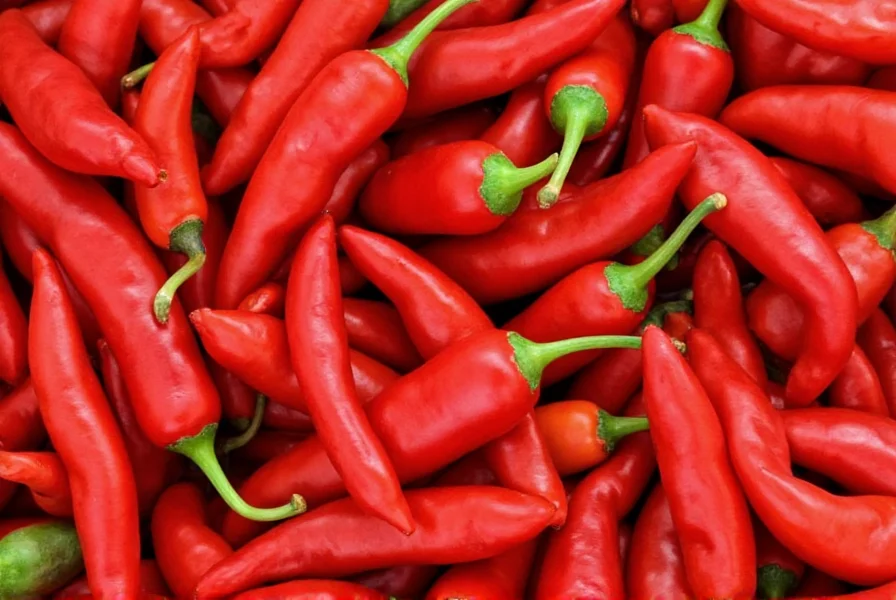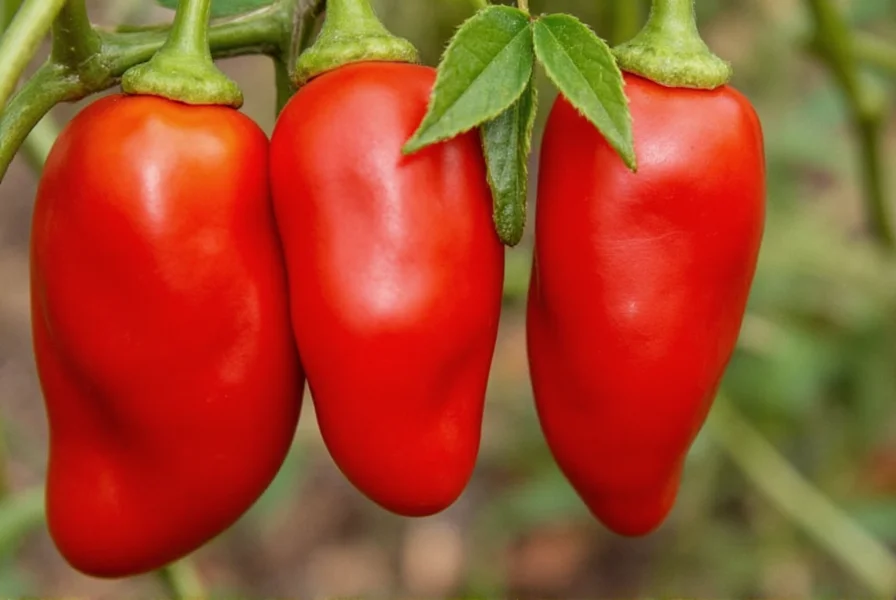Understanding where paprika comes from requires exploring both its botanical origins and cultural history. Unlike many spices with obscure beginnings, paprika has a well-documented journey from New World discovery to Old World culinary staple. The distinctive red powder we know today originates from specific varieties of Capsicum annuum, the same plant species that produces bell peppers, jalapeños, and cayenne peppers.
Botanical Origins of Paprika
While all chili peppers belong to the nightshade family (Solanaceae), paprika specifically derives from non-pungent or mildly pungent cultivars of Capsicum annuum. These particular varieties contain significantly less capsaicin—the compound responsible for heat in peppers—than their spicier cousins. The most prized paprika peppers grow in specific microclimates that enhance their color and flavor profile without increasing heat.
Botanically speaking, what distinguishes paprika peppers is their high concentration of carotenoids, particularly capsanthin, which gives paprika its characteristic deep red color. These compounds develop optimally when peppers ripen fully on the vine under specific temperature and sunlight conditions.
Historical Journey from Americas to Europe
Though paprika is now synonymous with Hungarian cuisine, its origins trace back to the Americas. Christopher Columbus encountered chili peppers during his 1492 voyage, mistakenly believing he'd reached India and naming them "peppers" due to their pungency resembling black pepper (Piper nigrum).
Spanish explorers introduced these New World peppers to Europe in the early 16th century. By the 16th century, peppers had spread through trade routes to Turkey and eventually reached Hungary via Ottoman traders around 1526. Hungarian farmers quickly recognized the region's ideal conditions for cultivating sweet pepper varieties, leading to paprika's integration into local cuisine by the 19th century.
| Region | Pepper Variety | Characteristics | Heat Level (Scoville) |
|---|---|---|---|
| Hungary | Kúri, Édesnemes | Deep red, sweet, complex flavor | 0-500 |
| Spain | ñora, Jaranda | Smoky, earthy, brick-red color | 100-1,000 |
| California | Sweet Bell Peppers | Bright red, mild, slightly sweet | 0 |
| South America | Aji peppers | Bright orange-red, fruity | 5,000-25,000 |
From Pepper to Powder: The Production Process
The transformation from fresh pepper to paprika involves several precise steps that determine the final product's quality. Understanding how paprika is made reveals why certain regions produce superior varieties.
Harvesting occurs when peppers reach full maturity and develop their characteristic deep red color. The timing is critical—peppers harvested too early lack flavor complexity, while overripe peppers may develop undesirable fermentation notes. Traditional Hungarian methods involve harvesting by hand to prevent bruising.
Drying methods significantly impact paprika's flavor profile. Traditional sun-drying on straw mats allows slow dehydration that preserves flavor compounds, while modern methods use temperature-controlled drying rooms. The most premium paprikas undergo slow drying at temperatures below 30°C (86°F) to preserve volatile flavor compounds.
Grinding completes the process. Stone mills produce the highest quality paprika by generating minimal heat during grinding, which preserves the delicate flavor compounds and vibrant color. Industrial steel mills can generate enough heat to degrade quality if not carefully controlled.

Different Types and Their Geographical Sources
Not all paprika is created equal—the region where peppers are grown dramatically affects the final product's characteristics. Each major paprika-producing region has developed distinctive varieties through centuries of selective breeding.
Hungarian paprika, considered the gold standard, comes from specific regions like Szeged and Kalocsa. These areas' unique soil composition and climate create peppers with exceptional color and flavor complexity. Hungarian classifications range from sweet (édes) to spicy (erős), with specialty varieties like rózsa (rose) paprika prized for its floral notes.
Spanish paprika (pimentón) often undergoes smoking over oak fires, creating distinctive varieties like pimentón de la Vera. This smoking process adds complex flavor dimensions not found in other paprikas. Spanish varieties range from sweet (dulce) to hot (picante), with smoked (ahumado) representing a third dimension.
American paprika, primarily grown in California, tends to be milder and brighter red than European varieties. While lacking the complexity of traditional Hungarian or Spanish paprikas, it serves as an accessible option for everyday cooking.
Common Misconceptions About Paprika's Origin
Several myths persist about where paprika comes from. One common misconception is that paprika is simply ground bell peppers—while sweet bell peppers can be used, traditional paprika comes from specific pepper varieties bred for optimal color and flavor, not just any sweet pepper.
Another misunderstanding is that all paprika is spicy. In reality, most traditional paprikas—especially Hungarian varieties—are completely sweet with no heat. The confusion often arises from mistaking paprika for chili powder, which typically contains additional spices and hotter peppers.
Many also believe paprika is a single uniform product. In truth, paprika varies dramatically based on origin, pepper variety, and processing method—differences so significant that Hungarian paprika has protected geographical indication status within the European Union.

How Paprika's Origin Affects Culinary Use
Understanding where paprika comes from directly informs how to use it in cooking. Traditional Hungarian dishes like goulash rely on specific paprika varieties that provide authentic flavor and color. Substituting with generic supermarket paprika often yields disappointing results because the chemical composition differs based on origin.
The carotenoid profile of region-specific paprikas affects not just color but also how the spice behaves when heated. Hungarian paprika's particular carotenoid composition makes it ideal for slow-cooked dishes, while Spanish smoked paprika's phenolic compounds provide stability at higher temperatures.
When selecting paprika, consider its geographical origin as carefully as you would wine or olive oil. Premium paprikas display their region of origin prominently, often with certification seals guaranteeing authenticity. Proper storage—away from light and heat—preserves the delicate compounds that make region-specific paprikas distinctive.
Frequently Asked Questions
What specific plant does paprika come from?
Paprika comes specifically from dried and ground peppers of the Capsicum annuum plant species, particularly sweet varieties like Kúri and Édesnemes in Hungary or ñora peppers in Spain. These are distinct cultivars bred specifically for paprika production, not just any sweet pepper.
Is paprika made from the same plant as chili powder?
While both originate from Capsicum annuum plants, paprika typically comes from sweet pepper varieties with minimal capsaicin, whereas chili powder usually contains hotter pepper varieties and often additional spices like cumin and garlic powder. Traditional paprika contains only ground peppers with no additional ingredients.
Why is Hungarian paprika considered superior?
Hungarian paprika benefits from ideal growing conditions in regions like Szeged and Kalocsa, with specific soil composition and climate that enhance the peppers' carotenoid content. Centuries of selective breeding have produced varieties with exceptional color and complex flavor profiles. Authentic Hungarian paprika has protected geographical indication status within the EU, guaranteeing its origin and quality standards.
Can you make paprika from bell peppers?
While bell peppers (which are also Capsicum annuum) can technically be dried and ground into a paprika-like product, traditional paprika comes from specific pepper varieties bred for optimal color, flavor, and carotenoid content. Bell peppers lack the concentrated flavor compounds and vibrant red color of dedicated paprika peppers, resulting in a less intense product.











 浙公网安备
33010002000092号
浙公网安备
33010002000092号 浙B2-20120091-4
浙B2-20120091-4